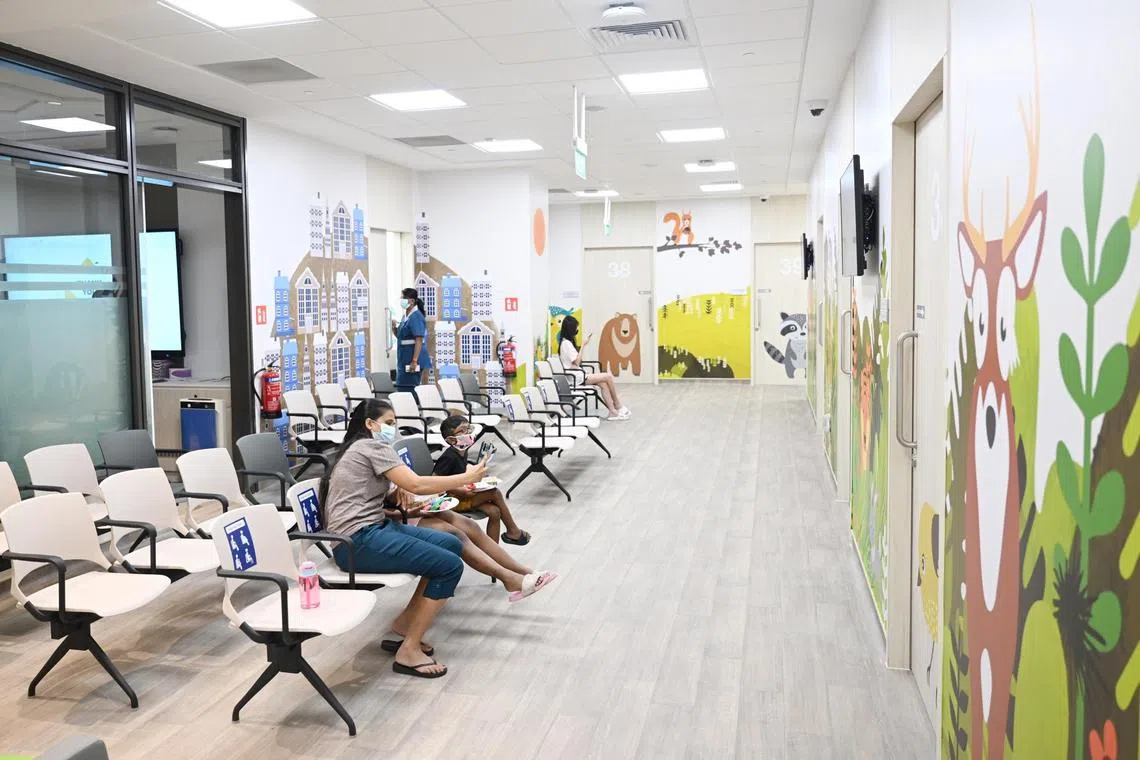Primary healthcare no longer just treats the sick, but also keeps people healthy
Sign up now: Get ST's newsletters delivered to your inbox

Building health, on top of curing illnesses, is a task doctors cannot shoulder on their own.
ST PHOTO: AZMI ATHNI
Follow topic:
SINGAPORE – The role of primary care, provided by polyclinics and private general practitioners’ (GP) clinics, has evolved from being just the first port of call for people who are sick, to also include keeping people healthy.
Health Minister Ong Ye Kung told The Straits Times: “There’s now a big overlap between what is primary care and what is preventive care. And our whole idea and definition and implementation of primary care is now much broader in scope.”
Building health, on top of curing illnesses, is a task doctors cannot shoulder on their own. They need to link up with other players in the community who can provide ongoing care, support and encouragement so patients continue to lead healthier lifestyles.
Likewise, Mr Ong said: “We don’t expect polyclinics to be standalone clinical institutions anymore – they have to link themselves up with the whole community.
“We are going to activate various groups to do all kinds of activities, such as encouraging people to quit smoking, eat healthy, exercise, and get seniors to come out of their homes, to be socially connected. All these are very critical and crucial health interventions in the community.”
This fits in with the roll-out of Healthier SG,
“Getting people to adopt health (and) good health habits will be the role of the whole primary care sector, and it will only rise in importance,” Mr Ong said.
The recently launched Sembawang Polyclinic
A Ministry of Health (MOH) spokesman said more polyclinics are needed because of the ageing population, the growing burden of chronic disease and the increasing complexity of chronic diseases.
“Hence, even as we increasingly tap the capacity of the private general practitioner sector which makes up the major proportion of our primary care doctors, we also need to expand polyclinic capacity to meet demand, in particular for complex chronic care,” the spokesman added.
But Mr Ong assured GPs they do not need to worry that they will not have enough patients to care for. GPs still provide 80 per cent of primary care.
He said: “Even as a solo GP, you can still do a lot for residents who are still healthy, or (who are experiencing) onset of chronic illness. One GP can do a lot of good for them. So GPs have no worry that they will run out of work. In fact, the work is going to get heavier and heavier.
“But where it’s more serious, more advanced, then you need support.”
Mr Ong said that unfortunately, as people age, more and more of them will have chronic illnesses. Once they advance to a certain stage, it can no longer simply be a case of one primary care doctor taking care of the patient, he said. Instead, a team effort is needed for good disease control.
MOH has for years been encouraging GPs to join primary care networks, which provide patients with care from multidisciplinary teams that include doctors, nurses and primary care coordinators. This should provide for more effective management of patients’ chronic conditions.
Patients are also able to access additional ancillary and support services provided by the networks, MOH says. These include diabetic foot and eye screening, as well as nurse counselling, which are important for good management of chronic conditions.
This concept had been tested in polyclinics, and proven effective.
Some years ago, polyclinics moved away from a simple doctor-patient relationship to “teamlet care”, where patients see the same team of doctors, nurses and allied healthcare professionals each time they are at the polyclinic.
“The care becomes more holistic and more appropriate,” said Mr Ong.
For more holistic health-promoting activities, Mr Ong said he would like to see polyclinics set up in an integrated hub, like Sembawang Polyclinic in the Bukit Canberra complex, which also houses a gym, swimming pool,
This is not always possible, given how built-up the country is, he said. “But let’s not make that an obstacle. In the end, people have to know each other, people have to link up, people have to sync and synergise their programmes. And I think that’s where the magic happens.”


